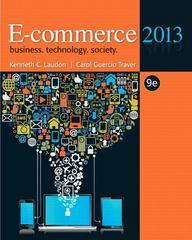
Unit 1 Case One: Connecting Patient Monitoring Devices to EHRs An electronic health record (EHR) is a computer-readable record of health-related information on an individual. The compiled data in an EHR can include information about patient demographics, medical history, family history, immunization records laboratory data, ongoing health problems, progress notes, medications, vital signs, and radiology reports. Ideally, EHRs incorporate data from all healthcare facilities a patient uses, making the data easily accessible to healthcare professionals. EHRs hold out the promise of improving health care and reducing costs, but for now, many hospitals are struggling to automate the capture of raw data from the various patient monitoring devices-such as vital sign monitors, ventilators, and electrocardiogram machines-and pass the data directly into each patient's EHR. This task is made more difficult because different devices and/or vendors often use different standards for communicating over the network. As a result, specialized software is required to receive the data and translate it into a form suitable for updating the EHR. Until communications standards are implemented across the healthcare industry, each new piece of monitoring equipment that outputs a nonstandard signal requires a new interface with the EHR. So if a promising new vital sign monitoring device is developed, some hospitals looking to use the device may be required to create a new software middleware layer to connect the new device to the EHR. Connecting monitoring devices and EHRs is expected to become a major business growth area over the next decade. Many software vendors and device manufacturers are moving quickly to capitalize on the opportunities involved with automating the many clinical-support activities that involve monitoring devices. The Center for Medical Interoperability has enlisted many of the nation's largest healthcare systems as part of its effort to strongly encourage device vendors to adopt communications standards that will ease the problems with interoperability. The Food and Drug Administration is working to encourage the development of interoperable devices by defining some 25 device standards. Solving the interoperability problem will require an agreement on standards through the cooperation of multiple stakeholders. Critical Thinking Questions What benefits can be achieved through the successful implementation of EHRs? What additional benefits will be gained by feeding data directly from patient monitoring devices directly into EHRs








